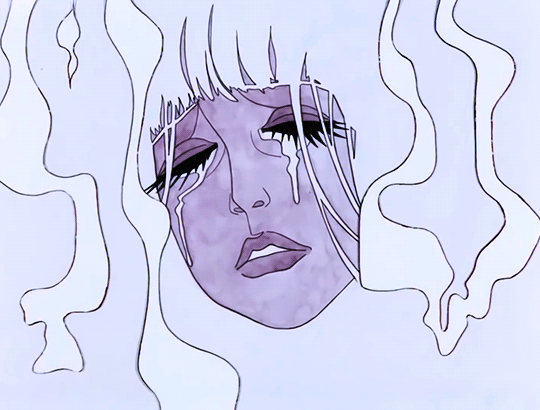
🙦 Belladonna of Sadness: an analysis 🙤

[Disclaimer: This analysis touches themes of sexuality and abuse. Also, the use of analytical psychology for the analysis of this film does not intend to affirm its factuality as a science, but rather places it as a useful set of symbols in this specific case. It has spoilers, by the way.]
Belladonna of Sadness has been one of my favourite films since I watched it. (Maybe because I don't watch much movies, or because I should watch more good movies) Its music is amazing, directly from the psychedelic rock of the time. And its visuals, although lacking animation most of the time, are like Gustav Klimt and the Beatles had a child, and that's good! I would call them orgasmic and tasty! And its influence in my own works doesn't pass unnoticed. However today I'm not here to analyse its technical aspects, but to analyse its story in the light of symbology.
First of all, if you haven't watched it yet, go watch it! And if you've watched it already, keep reading. I will give a very very brief summary of the junguian psychological model.
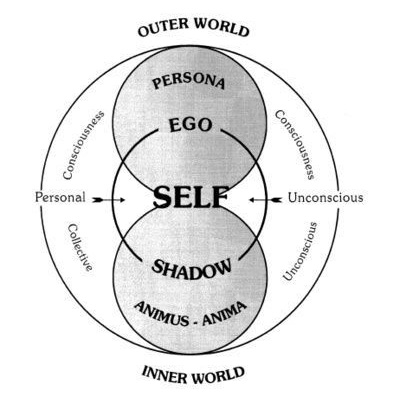
In this schema we can see the consciousness, the personal unconscious (that which is acquired by the environment) and the colective unconscious (that which is innhate in all human minds), and in then its archetypes, the Ego (the personal identity, being that which is accepted by one), from where the Persona develops (that is, what one shows to the exterior, the masks that one has), the Shadow (the part of ourselves that we don't acknowledge, the represed parts, whether they are positive or negative), the Animus/Anima (the archetypes of the opposite sex one has, and as Marie-Louise von Franz says: "the anima and animus have dual aspects: They can bring life-giving development and creativeness to the personality, or they can cause petrification and physical death"). And most of these archetypes will manifest in the movie.

The movie starts with the classical "Once upon a time" of every folktale. Its story tells us the events that happen in the life of our protagonist, Jeanne, a French peasant who has recently married Jean, and them, united by love, celebrate God. However, in their wedding night, Jeanne is raped by the baron and his subordinates, and nothing is done about it, because it is the supposed Droit du seigneur. (right of the lord) Jeanne is traumatized by the calamity, and returns to her spouse, who tries to comfort her but ends up strangling her because of the shock of the moment, and then runs away from their home.
This incidents make that which is represed inside her come out: anger, sadness, disappointment, and her Shadow, that manifests as a phallic demon. This demon also represents her Animus, the masculine archetype inside her, and he acknowledges this by saying: "I am you". He is flirty and pleasant with her, offering the comfort she needs, while offering her the power she seems to lack, and she finally accepts. The newly-weds begin to have luck, even in bad time, and Jean ceases his role as a simple peasant, he becomes a tax collector. But the people don't have the money the baron wants, this way Jean is unnable to recolect enough money, and the baron cuts his left hand, leading to Jean becoming an alcoholic.
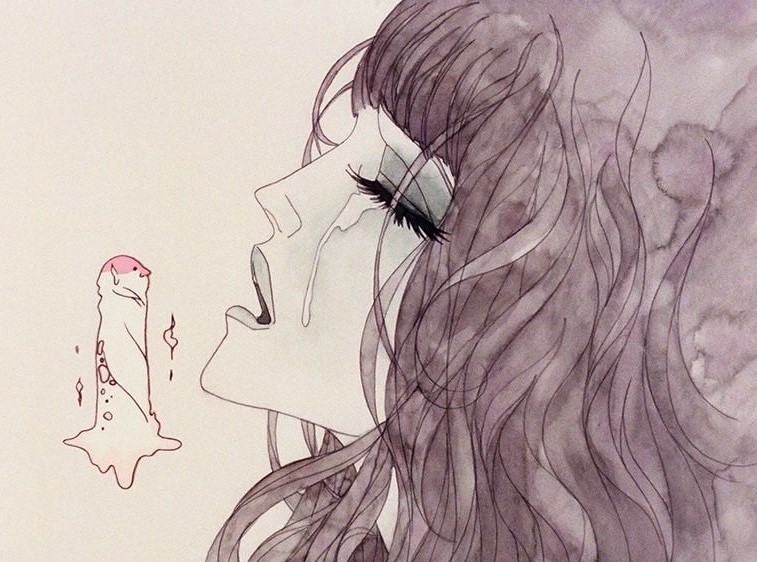

The demon comes back, bigger than before, and rapes Jeanne, who gives him her body in exchange of wealth, signifying how she is being posessed by her Shadow/Animus, however her soul still pertains to her groom and God alone. She, dressed in pure lime green, takes out a loan and starts giving loans to other people, this represents an intelligent move from her, and thus, the intellectual power of the Animus (that corresponds to Logos, reason), becoming the most respected and powerfull person in the village. The baron returns from war along with his wife, and both being surprised by Jeanne's condition, call her a witch and change the villagers' mind, who begin to chase her. She runs home, but Jean refuses to open the door and she is attacked. Soldiers come to arrest her, but she escapes to the woods, and ends up in the wasteland.
There she encounters the demon again, bigger than ever, and he tells her: "I've been with you since the beginning". She is angry and claims that this is all his fault, and while he knows this, he also says he has created her the way she is now. Jeanne wants to do bad now, she accepts a deal with the Devil and gives him her soul, uniting in a sexual scene that ends up becoming a psychedelic representation of time going backwards to the most primitive era of the world. Now, in Hell, in a hell where it's spring, she wants to be strong and respected, and learns that even in evil is beauty. She has fully integrated her Shadow/Animus, recieving a vulva-shaped flower called Belladonna, (beautiful woman in italian) representing how trough her Animus she has encountered her true femininity.
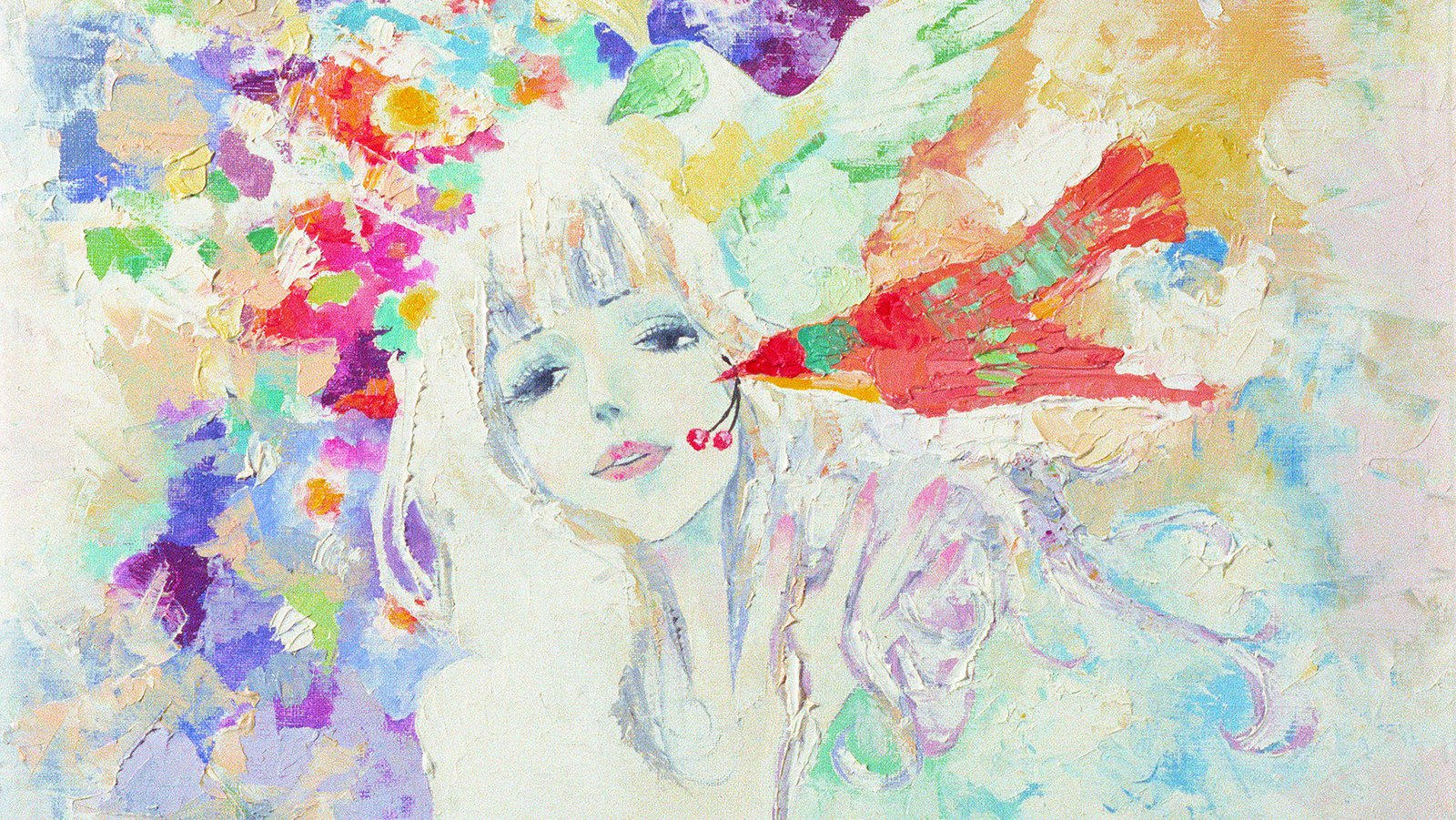
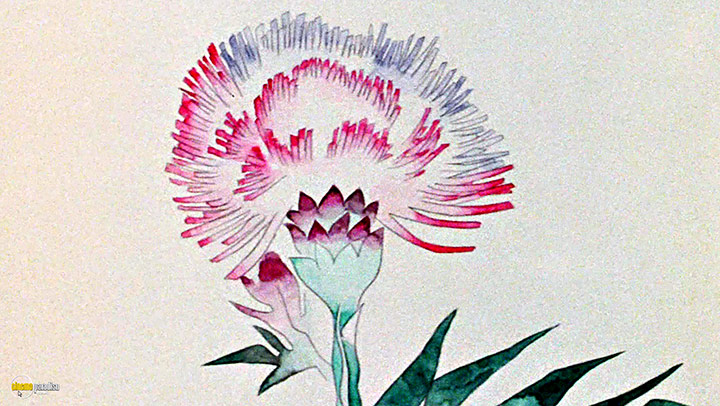
Thanks to the flower she heals a first man from the bubonic plague, and shortly after, everyone, being infected by it, visits her to be healed. She gives them the cure, her flower, and they are liberated not only from illness but also from social and mental repression, getting everyone involved in a very orgiastic scene (that starts with couples dancing on their backs, perhaps representing the return to Plato's Symposium's androgyne) whose mistress is Jeanne, more powerfull than ever; that is testified by the villagers to the court, and the court is both surprised and overwhelmed.
After that, a page who is enamoured of the baroness asks Jeanne to help him, and knowing that he had mistreated her before, she forgives him and helps him with a drop of the Belladonna that makes the baron's wife feel aroused, ending up in her and the page finally having sexual relationships, but they get caught sleeping by the baron, killing them both. With that, the Baron commands Jean to ask Jeanne for a meeting, where he offers her to start from scratch, she accepts and forgives him, and he tries to manipulate her into agreeing to negotiate with the baron.
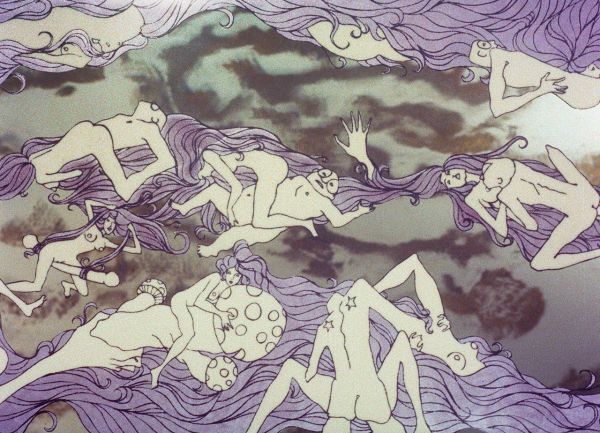
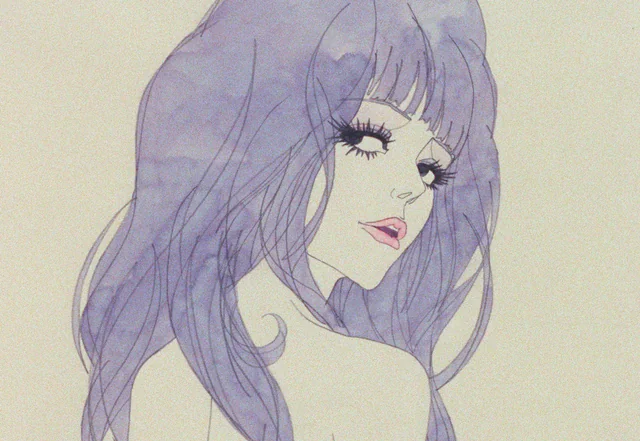
The baron, surrounded by the court, (among whom is Jean) offers her, in exchange of the flower's power, 100 acres of fertile land, then the village chiefship, then the title of nobility, then being the head of nobility. But she refuses, she wants... Everything, the entire world! All of it. She has all the power she needs and is one with the World.
She has passed trough the stages of the Anima. Being Eve in the start, when she was submissive and treated purely as an object of desire; then Helen, with her green coat, being capable of worldly success; later Mary, with the flower of Belladonna, possessing virtue; and finally, Sophia, when she's totally free, with her positive and negative aspects.
The baron is unable to offer her anything, and in wrath and impotence, orders to kill her. In an almost silent scene, where we see how Jeanne looks at who used to be her husband, waiting for him to do something, he does nothing, and she feels betrayed. In a last impulsive attempt, Jean tries to take revenge and fails terribly, it's too late. Jeanne dies helpless, burned (like Jeanne d'arc) in the cross (like Jesus), but her soul remains in every woman, more alive than ever, and these women start the French Revolution*, ending the movie with the painting of La Liberté guidant le peuple, truly encompasing part of the film's spirit...
*This is not a historical fact.
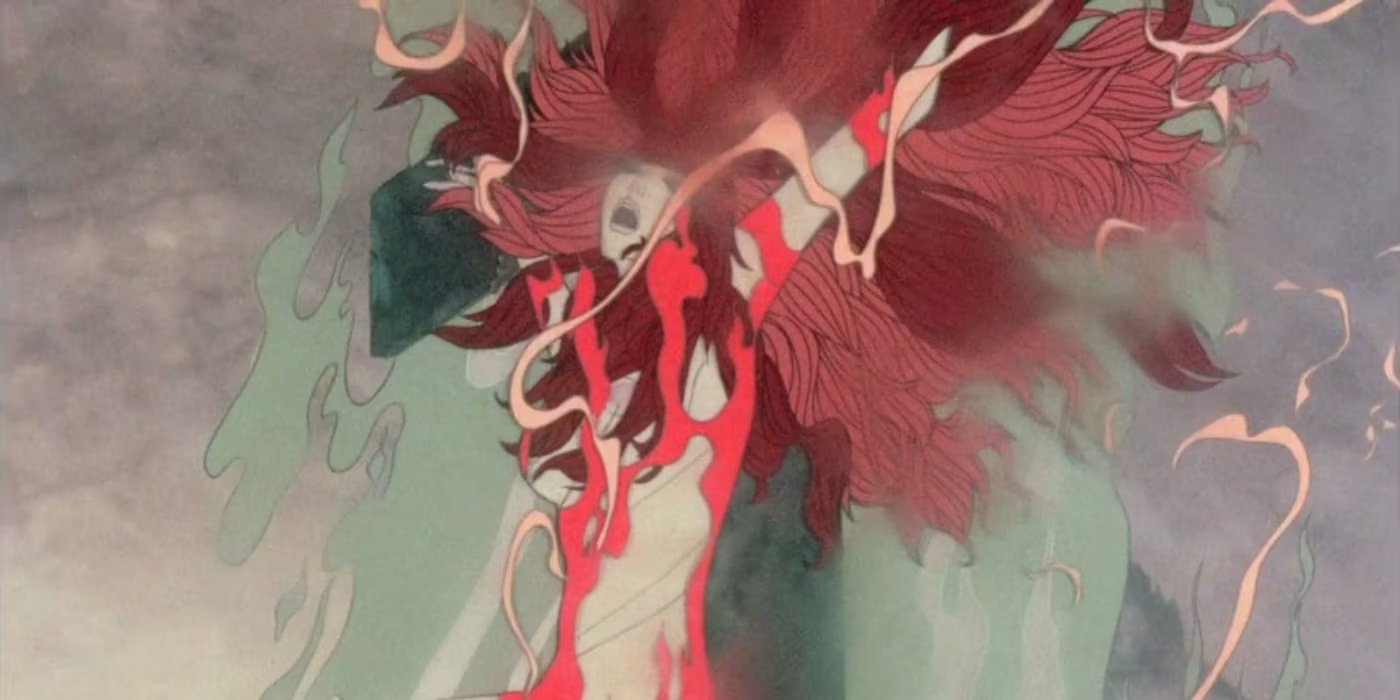
Belladonna of Sadness' Devil is a complex character that one shouldn't fail to see as good or evil. While this demon gives Jeanne truly painful ordeals, he also gives her power and healing. When she was getting married he didn't appear, nor when she was being raped, but when she was all alone he did, because everything after that is part of Jeanne's Will, talking about the Devil is talking about Jeanne, and viceversa; the way he acknowledges how almost everything bad that happened to her is because of him while he also gave her everything good after her abuse, just shows how this Devil is not the one from the old medieval art, but he is also God.
Diabolus est Deus inversus. Homo est deus.